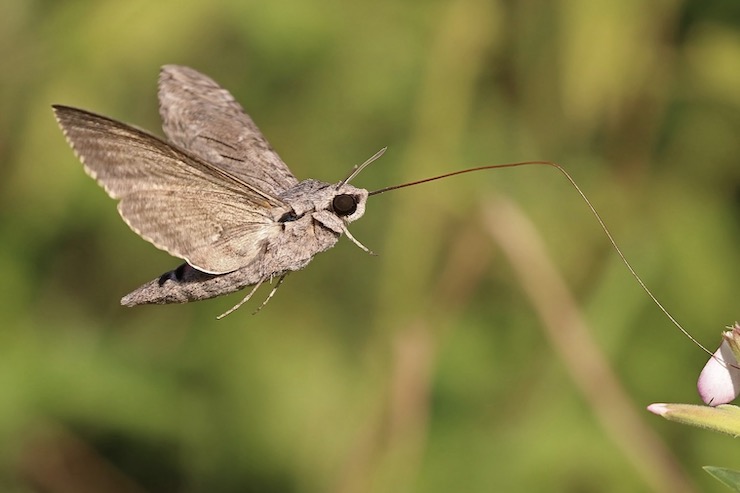Professor from Boston University Using Moths To Help Program a Fully Autonomous Drone

© Charles J Sharp
The United States of America spares no expenses when it comes to researching the possibilities of drone technologies. As drones have become the next generation of warfare technology, the U.S. Department of Defense (DOD) often outsources their research to have access to the brightest minds in the field. Recently the DOD awarded a $7.5 million Multidisciplinary University Research Initiative (MURI) grant to a team led by Boston University’s Ioannis Paschalidis. With the grant, researchers are being tasked with developing neuro-autonomous robots and drones that can navigate land, sea, and air.
Professor Paschalidis is the director of BU’s Center for Information and Systems Engineering and runs his own lab called The Paschalidis Network Optimization & Control (NOC) Lab. As explained on the website “Research in the NOC Lab deals with fundamental aspects of optimizing the design and operation of networks, as well as, designing control algorithms to regulate their operation. Increasingly, much of our research is data-driven and it includes important problems in data science and learning theory.” In developing a drone with roots in neuroscience, how the brain and nervous system interact with each other, Paschalidis enlisted the help of Professor Thomas Daniel from the University of Washington. At the Daniel Lab in UW’s Biology Department, research on the movement and functions of animals controlled through neurological processes are studied.
Through combining two separate teams with expertise in intelligent engineering systems and animal neurology, a working paradigm of a drone with neuro-autonomy is in the beginning stages of development. This was done by closely examining how hawkmoths navigate through different environments. Hawkmoths are fairly large insects that are known for their flight agility, often compared to and even confused for hummingbirds. Like hummingbirds, hawkmoths are able to hover and rapidly navigate through obstacles. In Professor Daniel’s lab, they attached (with a dab of safe glue) lab-raised hawkmoths to a metal rod connected to a torque meter. This rod was then placed in front of a screen projecting a virtual forest. The trees in the forest were set to mimic the density and spacing found within a range of natural forests. The forest projection was then moved at a constant speed and the torque meter measured the moth’s reactions and neurological urges to move.
The data collected in The Daniel Lab was then used by the NOC Lab to translate into how to program a drone. The key that the research showed was that the moths fly through the use of optical flow. In other words, they visually take in obstacles in relation to their speed, direction, and distance and adjust instantly their flight pattern to compensate for an obstacle that is close by and or approaching. The NOC team wrote a drone program that would respond under similar conditions. They then inserted a virtual drone into the virtual forests to test flight. They found that the virtual drones, using an optical flow flight directive, were able to navigate through an undetermined landscape. However, the drone needed more time to adjust it’s flight to new settings than a moth would.
Generally, drones are operated by a controller or along a predetermined path. But to have true autonomy a drone needs to be able to adjust to unknown obstacles that it may encounter, such as wildlife, other drones, or aircraft. While this comes naturally to humans and animals, robotics are still trying to adjust for this skill. As Professor Paschalidis said, “Together with behavioral observations, if we can understand what is happening in the brain, the hope is that we’ll get a clearer picture of how we and other species are navigating in complex terrains. Then we’ll be able to take these lessons, apply them, and extract (navigational strategies) that would lead to more autonomous, more adaptable robot systems.” The next stage of testing will involve studying how other creatures like ants, mice, and even humans use neural processes to navigate with the goal of developing a drone that is a self-aware, adaptive, autonomous vehicle in complex environments.
|